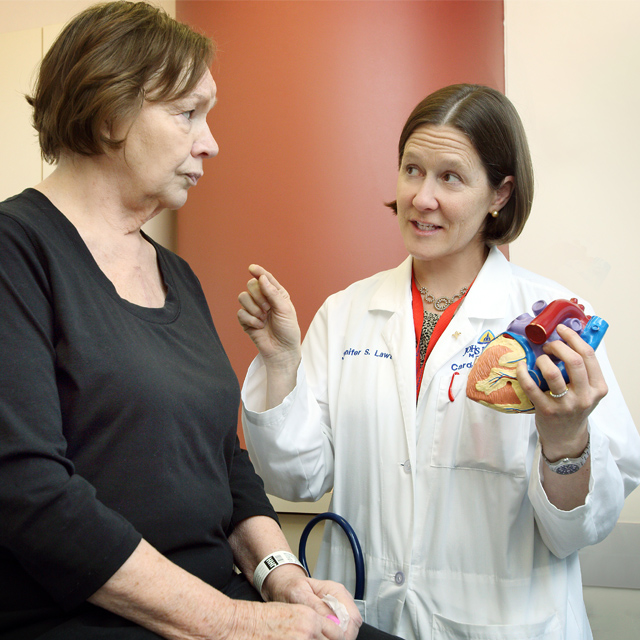
April 9, 2018
Since 1984, more women than men have died of cardiovascular disease (CVD) annually. “Differences between the sexes before, during and after the surgeries to treat this condition could be partially responsible,” says Jennifer Lawton, chief of the Division of Cardiac Surgery at The Johns Hopkins Hospital. “Our extreme awareness of these differences makes Johns Hopkins unique.” 
Lawton is knowledgeable not only about factors that can improve bypass surgery outcomes for women — such as performing these surgeries off-pump, a technically demanding practice that can halve operative mortality for women — but also about societal expectations, such as serving as caregivers for others, that might affect women’s ability to have an optimal recovery.
Women have a host of factors that can delay their access to surgery, says Lawton, whose research focuses on these differences between the sexes. One of these factors is being more likely to have an atypical presentation of coronary artery disease. Symptoms might include fatigue, abdominal pain, nausea, vomiting and indigestion, with or without the chest pain and pressure that’s more characteristic of this condition. Women also tend to have a longer time from symptom onset to presentation, from symptom onset to diagnosis, and from symptom onset to medical intervention and admission. Each of these delays allows the disease to worsen over time, increasing the risk for poor surgical outcomes, Lawton explains.
When women are referred for bypass surgery, she adds, these differences continue to add up. Only 30 percent of these procedures are performed on women. Despite the known survival benefits of using the left internal mammary artery, this arterial graft is used less frequently in women. Women often get venous grafts that don’t stay open as long and are associated with reduced survival.
After coronary artery bypass grafting, women tend to have higher infection and readmission rates and are less likely to participate in cardiac rehabilitation than men. Women also tend to have lower functional status and quality of life after this surgery, less symptom relief and greater rates of depression.
Lawton leads a team that uses a variety of surgical techniques and tools to treat CVD. The team includes Ahmet Kilic, director of heart transplantation and mechanical circulatory support.
- More likely to have an atypical presentation of coronary artery disease
- A longer time from symptom onset to presentation, from symptom onset to diagnosis, and from symptom onset to medical intervention and admission
- Less frequent use of the left internal mammary arterial graft despite the known survival benefits
- Higher infection and readmission rates after coronary artery bypass grafting
- Less likely than men to participate in cardiac rehabilitation
- Lower functional status and quality of life, less symptom relief and greater rates of depression after surgery

